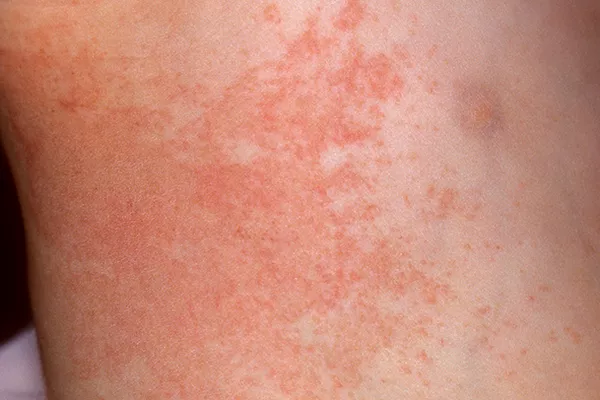Skin disorders can manifest in a variety of forms, each presenting unique challenges for diagnosis and treatment. Spongiotic psoriasiform dermatitis is one such condition that can perplex both patients and healthcare providers due to its overlapping characteristics with other dermatological disorders. In this comprehensive article, we delve into the intricacies of spongiotic psoriasiform dermatitis, examining its symptoms, potential causes, diagnostic approaches, and available treatment modalities.
What is Spongiotic Psoriasiform Dermatitis?
Spongiotic psoriasiform dermatitis is a histopathological term that describes a pattern of skin inflammation characterized by spongiosis (intercellular edema in the epidermis) and a resemblance to psoriasis on microscopic examination. Clinically, this dermatitis can present with erythematous (red), scaly plaques resembling psoriasis, often affecting areas such as the elbows, knees, scalp, and trunk. However, unlike psoriasis, spongiotic psoriasiform dermatitis typically shows different histological features upon biopsy.
Symptoms of Spongiotic Psoriasiform Dermatitis
The symptoms of spongiotic psoriasiform dermatitis often mirror those of psoriasis, making clinical diagnosis challenging without histological examination. Common symptoms include:
- Erythematous Plaques: Red, inflamed patches of skin that may be covered with silvery scales.
- Itching (Pruritus): Intense itching is a hallmark symptom and can significantly impact the patient’s quality of life.
- Scale Formation: Flaky, dry skin that may peel or shed.
These symptoms can vary in severity and may come and go in episodes. Some individuals experience persistent symptoms, while others may have periods of remission.
Causes and Risk Factors
The precise etiology of spongiotic psoriasiform dermatitis remains unclear, although several factors are believed to contribute to its development:
- Immune Dysregulation: Dysfunction in the immune system, similar to that observed in psoriasis, is thought to play a role.
- Genetics: There may be a genetic predisposition, as certain genes are associated with both psoriasis and spongiotic dermatitis.
- Environmental Triggers: Exposure to certain environmental factors or allergens could provoke an immune response leading to skin inflammation.
Risk factors for spongiotic psoriasiform dermatitis include a family history of psoriasis or other dermatological conditions, a compromised immune system, stress, and exposure to allergens or irritants.
Diagnosis of Spongiotic Psoriasiform Dermatitis
Diagnosing spongiotic psoriasiform dermatitis requires a combination of clinical evaluation, patient history, and histopathological examination. The diagnostic process typically involves the following steps:
- Physical Examination: The dermatologist examines the affected skin and notes the appearance of lesions.
- Patient History: Information about the onset of symptoms, any triggering factors, and family history of skin disorders is collected.
- Biopsy and Histopathological Examination: A skin biopsy is essential for confirming the diagnosis. Microscopic evaluation of the skin tissue reveals spongiosis and psoriasiform changes, distinguishing this condition from other dermatoses.
In some cases, additional tests may be required to rule out other skin disorders with similar presentations.
Treatment Options
The management of spongiotic psoriasiform dermatitis aims to alleviate symptoms, reduce inflammation, and prevent flare-ups. Treatment strategies may include:
- Topical Corticosteroids: These are often the first-line treatment, providing relief from itching and reducing inflammation.
- Emollients and Moisturizers: Keeping the skin hydrated helps in managing dryness and scaling.
- Topical Calcineurin Inhibitors: These medications modulate the immune response in the skin and are particularly useful in sensitive areas like the face and genitalia.
- Systemic Medications: In severe cases or when topical treatments are ineffective, systemic medications such as oral corticosteroids, methotrexate, or biologic agents may be prescribed.
- Phototherapy: Controlled exposure to ultraviolet light can help reduce inflammation and slow down the abnormal skin cell growth seen in psoriasis.
Prognosis and Outlook
The prognosis for spongiotic psoriasiform dermatitis varies depending on the severity of symptoms and the individual’s response to treatment. With appropriate management, many patients experience significant improvement in their condition and quality of life. However, spongiotic psoriasiform dermatitis can be a chronic condition, requiring ongoing maintenance therapy to prevent relapses.
Conclusion
Spongiotic psoriasiform dermatitis presents a diagnostic and therapeutic challenge due to its overlapping features with other skin disorders. A multidisciplinary approach involving dermatologists, pathologists, and allergists is often necessary for accurate diagnosis and optimal management. Research into the underlying mechanisms of this condition continues, offering hope for more targeted therapies in the future. Early recognition and intervention are crucial in providing relief to individuals affected by spongiotic psoriasiform dermatitis and improving their overall well-being.
Related Topics:


























